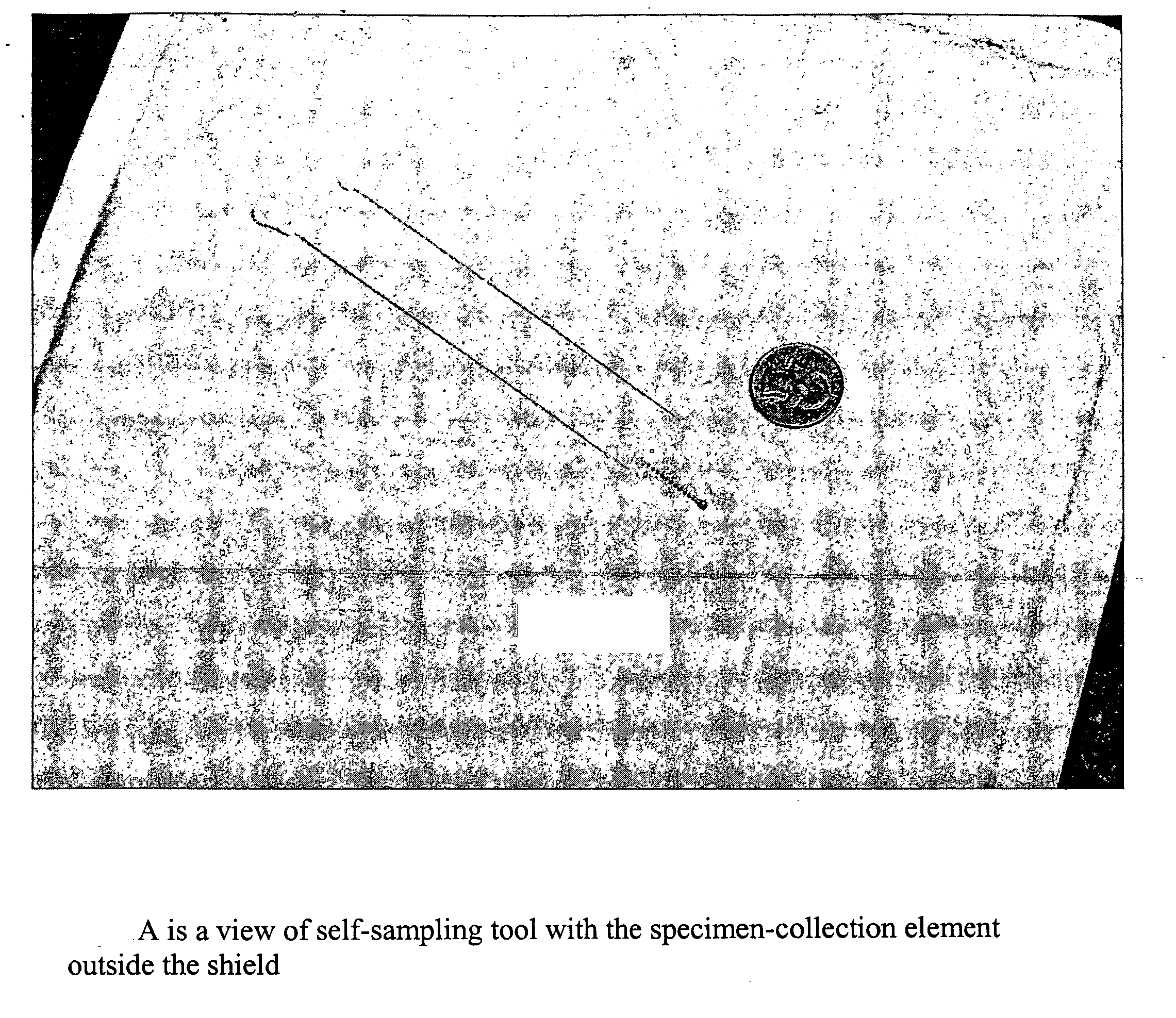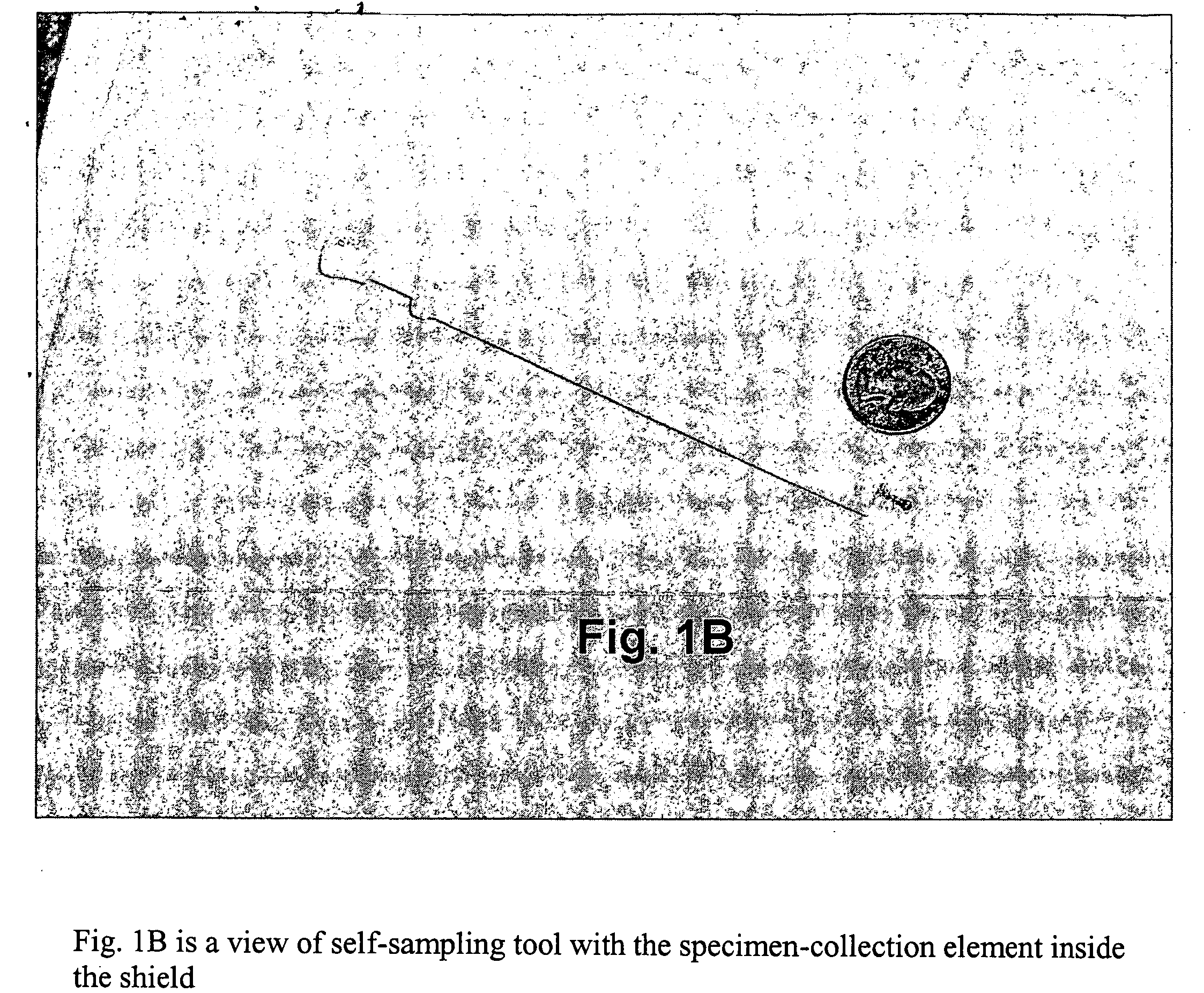Method for detecting pathogenic agents
a pathogenic agent and detection method technology, applied in the field of detection methods, can solve the problems of inconvenience, embarrassment, discomfort of patients, pap smear, etc., and achieve the effect of accurately detecting the presence of hpv and accurate detection of hpv
- Summary
- Abstract
- Description
- Claims
- Application Information
AI Technical Summary
Benefits of technology
Problems solved by technology
Method used
Image
Examples
example 1
Collection of Samples and Number of Tests
[0038] The study was part of the BCCSP program (Breast and Cervical Cancer Screening Program), which was sponsored by the CDC (Centers for Disease Control, Atlanta, Ga., USA).
[0039] Ninety patients were included, with an age range of 26 to 63 years, and a median of 45 years. The age range by decade of life is show below.
TABLE 1Age distribution of women participating the studyAge range by decade of lifePercent of total20-29 years of age 4.8%30-39 years of age29.8%40-49 years of age34.5%50-59 years of age23.8%≧60 8.1%
[0040] Two samples were collected from each of ninety patients. For each patient, one sample was collected by a health care provider, while the other sample was collected by the patient herself. Two of the ninety samples collected by the health care provider were of insufficient volume to be confident in the test results (2.22%). Five of the ninety patient-collected samples were of insufficient volume to be confident in the tes...
example 2
HPV Positive Individuals
[0053]
Total number of individuals HPV positive30 / 90 (33.3%)(either test):Number positive on both tests:13 / 90 individuals (14.4%)Number positive on “provider collected” 5 / 90 individuals (5.5%)only:Number positive on “self collected” only:12 / 90 (13.3%)Age range of HPV positive individuals:29 to 60
[0054] The “provider collected” specimens picked up 18 of the 30 (60%) of HPV positive individuals; whereas “self collected” specimens, picked up 25 of the 30 (83.3%) of HPV positive individuals.
example 3
Cellular Abnormalities / Changes Seen
[0055][0055] Number of HPV positive individuals, no cellular abnormalities: 25 / 30 [0056] Number of HPV positive individuals, cellular abnormalities seen: 5 / 30
[0057] Number of individuals with cellular changes / abnormalities (−) for HPV: 18 / 60
Reactive epithelial cells = 5 / 60Inflammation =12 / 60ASCUS* = 1 / 60
*atypical squamous cells of undetermined significance
[0058] Most of the HPV positive cases showed no cellular abnormalities at Pap. Most of the cases with cellular changes at Pap were negative for HPV. These changes were primarily inflammation and reactive epithelial cells. The one case where LGSIL (low-grade squamous intraepithelial lesion) was seen at Pap was HPV positive.
PUM
| Property | Measurement | Unit |
|---|---|---|
| length | aaaaa | aaaaa |
| length | aaaaa | aaaaa |
| length | aaaaa | aaaaa |
Abstract
Description
Claims
Application Information
 Login to View More
Login to View More - R&D
- Intellectual Property
- Life Sciences
- Materials
- Tech Scout
- Unparalleled Data Quality
- Higher Quality Content
- 60% Fewer Hallucinations
Browse by: Latest US Patents, China's latest patents, Technical Efficacy Thesaurus, Application Domain, Technology Topic, Popular Technical Reports.
© 2025 PatSnap. All rights reserved.Legal|Privacy policy|Modern Slavery Act Transparency Statement|Sitemap|About US| Contact US: help@patsnap.com



